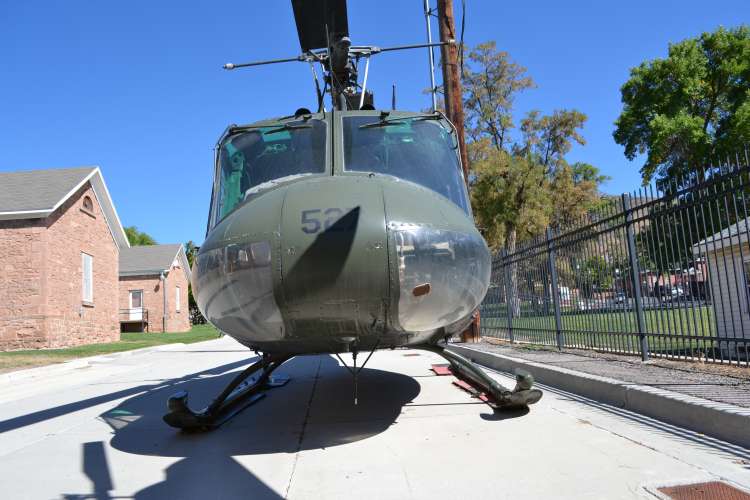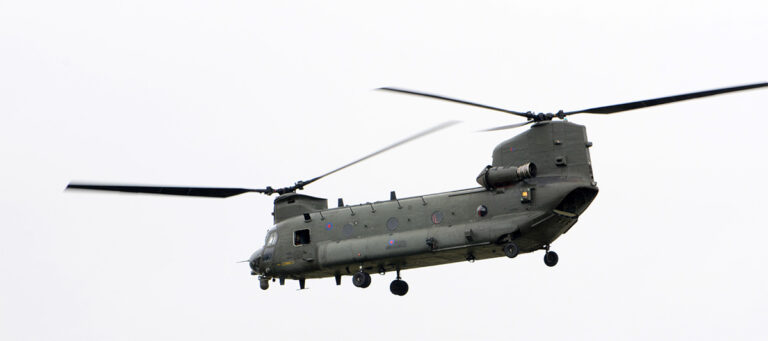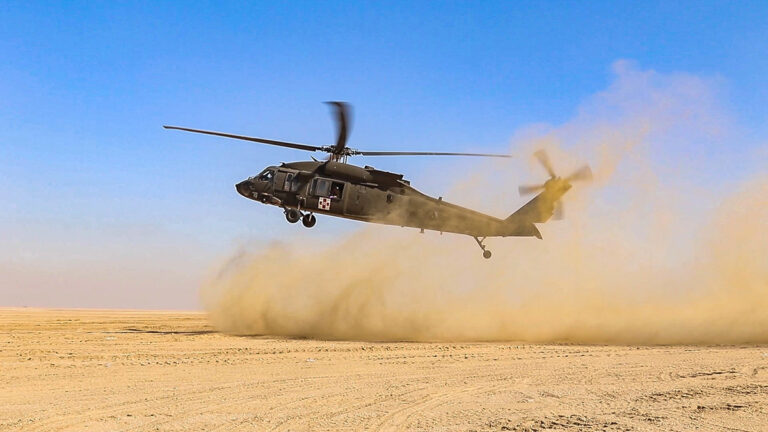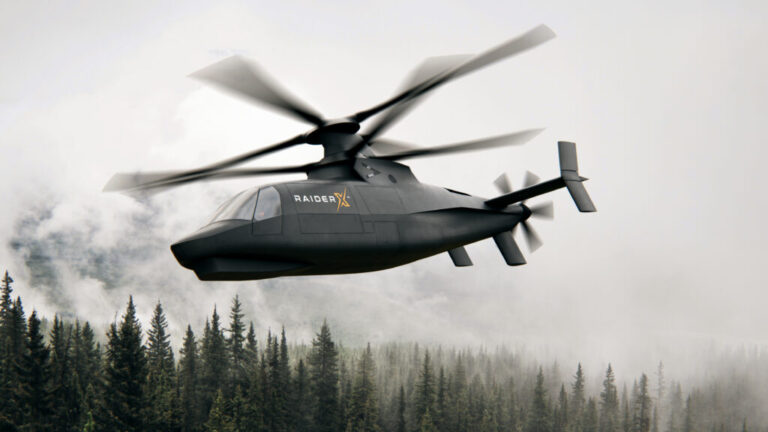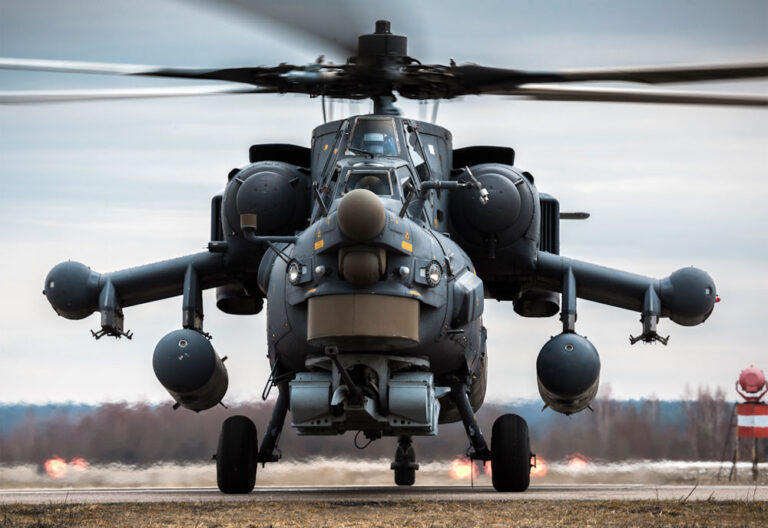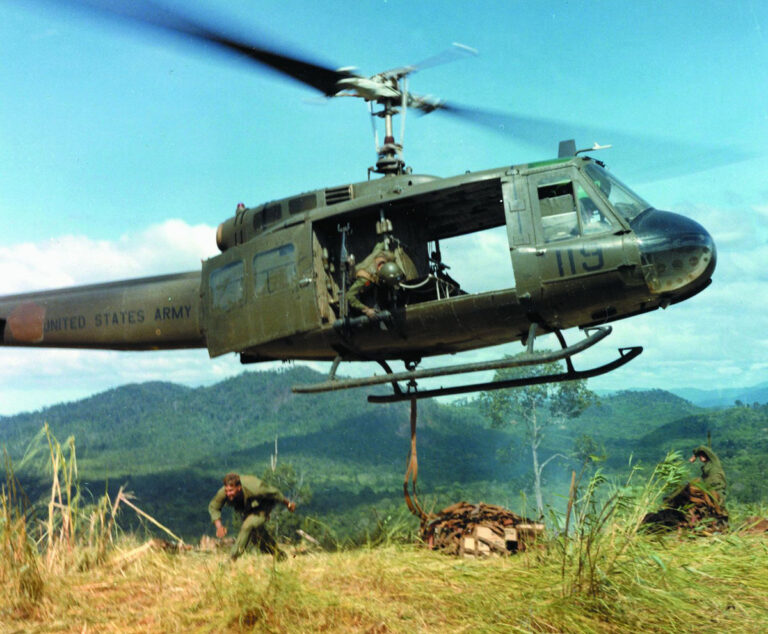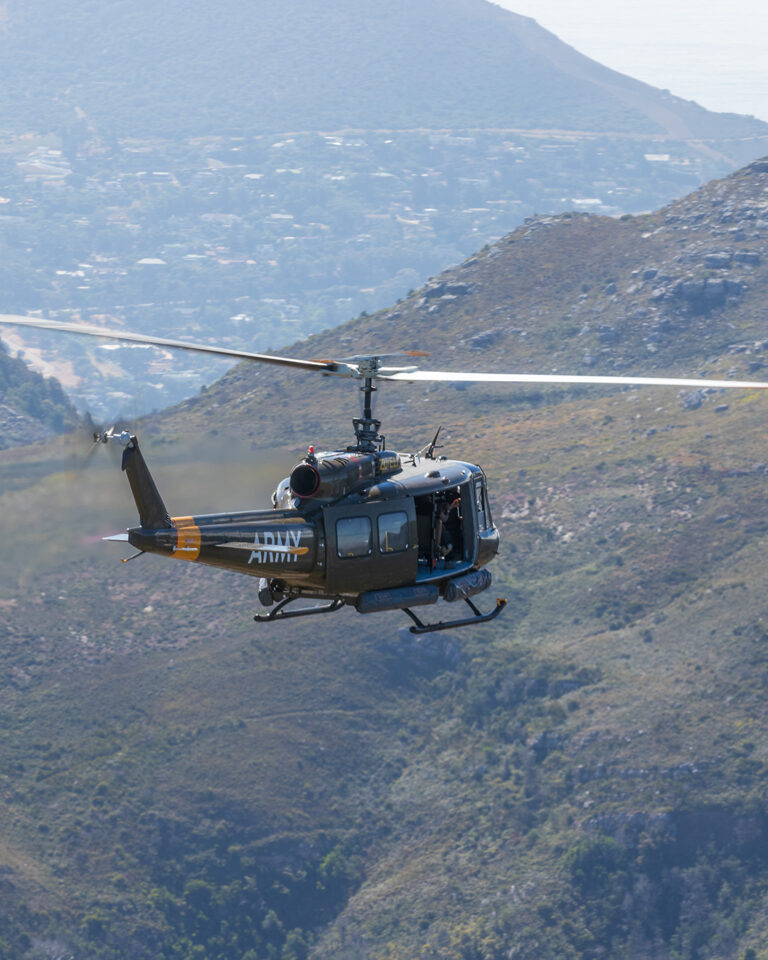The Bell UH-1 Huey Helicopter
The Development of the Bell Huey Helicopter
In 1952 the US Army specified a requirement for new helicopter to serve as a medical evacuation, helicopter trainer, troop transport and general utility helicopter. Of the twenty companies that submitted designs, Bell Helicopter won the bid in late 1953 to build the first 3 prototypes based on their Model 204 design. The first flight of the XH-40 was October 20th, 1956 at Fort Worth, Texas and Bell was commissioned to build the first 100 HU-1A helicopters in March 1960, officially named Iroquois. While its official name is rarely used, the helicopter was nicknamed the Huey and the name stuck even after the US Army changed its designation to UH-1 “Huey” Helicopter.
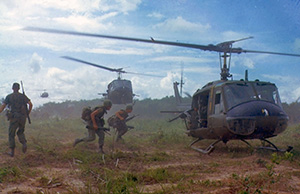
Development started on the Huey Helicopter in 1960 to correct problems in the armed version of the UH-1B. Improvements included a more powerful T53-L-11 1,100 shp (820 kW) turbine engine, a new rotor system for higher airspeed and better maneuverability, longer main blades, longer tail boom, a stronger vertical fin, larger synchronized elevators and its oversized air cleaner behind the main shaft. Production of the UH-1C started in June 1966. Made famous during the Vietnam conflict, the Huey was the first helicopter gunship that achieved widespread combat use, while its main role was a troop transport. Modern versions of the Huey are expected to remain in US military service through 2015.
The Huey in Vietnam: Bell’s UH-1 at War
Few implements of war are as representative of the US presence in Vietnam as the Bell Huey UH-1-series helicopters. Whether serving in the role of troop transport for airborne assault, supply transports, aerial gunships, or medical evacuation, the Huey was seemingly everywhere. The versatile aircraft, officially the “Iroquois,” was affectionately known to all as the “Huey,” a name derived from its early model designation of HU-1A. The Huey, later re-designated UH-1, was a mainstay during America’s presence in Vietnam, and 11 Huey crewmen earned the Medal of Honor.
Bell’s “Huey” Helicopter, officially known as the Model 204, formed the basis for one of the most successful series of helicopters ever built. Flown for the first time in October 1956, it was designated the XH-40, then HU-1 by the US Army (who called it the Huey), before a designation change to the HU-1A Iroquois. The HU-1B introduced a more powerful engine and the HU-1C had a new rotor system. Later still the HU- designation was changed to UH-.
The turbine engine was one of the keys to the helicopter’s success. Mounted on the cabin roof just behind the gearbox, it left the cabin unencumbered and provided the performance required by the US Army. The engine was upgraded to a 1100HP engine that became standard. The larger engine allowed for the to be armed with rocket pods and machine guns carried on the cabin’s sides.
The UH-1C, which flew in 1965, used a new rotor system with ‘door hinges’ and wider blades. This provided more lift, enabling the fuel load to be increased and improving the machine’s maneuverability and speed. Variants of the UH-1C were used by the US Air Force, Navy and Marine Corps in the training, rescue and assault roles.
Bell UH-1C “Huey” Helicopter
| Type: | Single-engine multi-role utility helicopter |
| Poweplant: | one 1100-hp Lycoming T53 turboshaft engine |
| Maximum Speed: | 148mph (238 km/h) at sea level |
| Initial Climb Rate: | 1400 fpm (427 m/min) |
| Range: | 381 miles (515 km) with auxiliary fuel |
| Service Ceiling: | 11,500ft (3505 m) |
| Weights: | 5060 lbs (2300 kg) empty; Maximum Takeoff 9480 lbs (4309 kg) |
| Dimensions: | Rotor Diameter: 44ft (13.41 m) Length: 42ft 7in (12.98 m) Height: 12ft 7in (3.84 m) Rotor Disc Area: 1520 sq ft (141.26 m2) |


